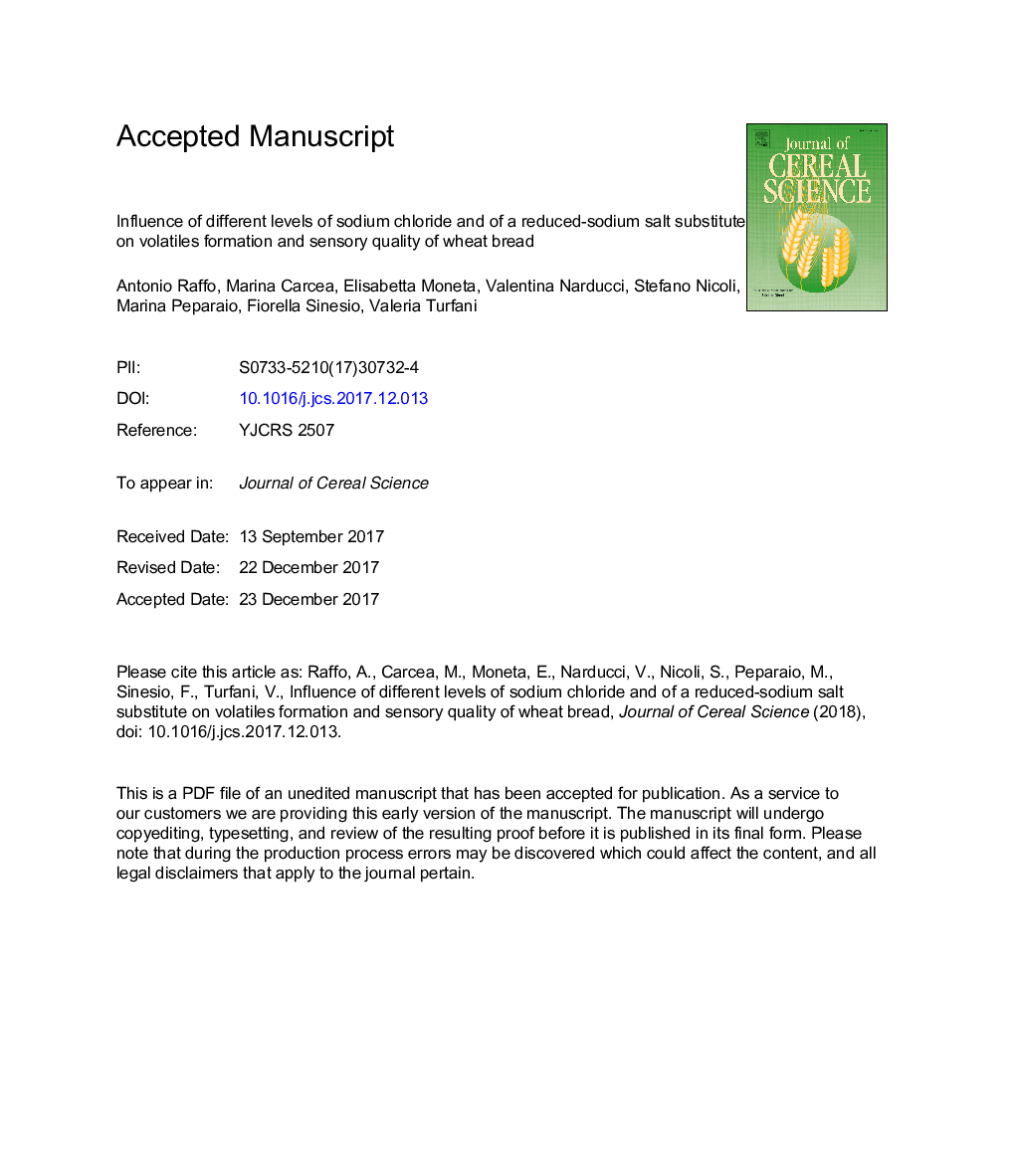| کد مقاله | کد نشریه | سال انتشار | مقاله انگلیسی | نسخه تمام متن |
|---|---|---|---|---|
| 8881544 | 1624883 | 2018 | 29 صفحه PDF | دانلود رایگان |
عنوان انگلیسی مقاله ISI
Influence of different levels of sodium chloride and of a reduced-sodium salt substitute on volatiles formation and sensory quality of wheat bread
ترجمه فارسی عنوان
تأثیر سطوح مختلف کلرید سدیم و جایگزین نمک سدیم کاهش یافته در شکل گیری فرار و کیفیت حسی نان
دانلود مقاله + سفارش ترجمه
دانلود مقاله ISI انگلیسی
رایگان برای ایرانیان
کلمات کلیدی
موضوعات مرتبط
علوم زیستی و بیوفناوری
علوم کشاورزی و بیولوژیک
علوم زراعت و اصلاح نباتات
چکیده انگلیسی
The influence of sodium chloride or of the reduced-sodium salt substitute Pansalt® (NaCl 57%, KCl 28%, MgSO4 12%, lysine hydrochloride 2%, silica 1%, iodine 0.0036%) at two addition levels, 1.5% and 3% (on flour weight), on volatiles formation and sensory profile of yeasted wheat bread was investigated. Volatiles were determined by HS-SPME/GC-MS. An increased level of NaCl was associated to a reduced formation of 2-phenylethanol, a key odorant contributing to a yeast-like note. In contrast, at the 3% NaCl level the formation of most of Maillard reaction volatile products was promoted. Accordingly, sensory analysis highlighted a less intense yeasty note in the crumb, as well as more intense toasted aroma and flavour in the crust of bread with 3% NaCl with respect to the 1.5% counterpart. Bread with 3% NaCl was also characterized by more bitter crust and more even crumb structure. Increasing the addition level of Pansalt® from 1.5 to 3% produced similar effects on bread sensory attributes than NaCl. However, the substitution by Pansalt® was not able to maintain the same level of perceived saltiness as NaCl at both addition levels. In particular, Pansalt® at 3% produced a perceptible increase in bitter taste and aftertaste in the crust.
ناشر
Database: Elsevier - ScienceDirect (ساینس دایرکت)
Journal: Journal of Cereal Science - Volume 79, January 2018, Pages 518-526
Journal: Journal of Cereal Science - Volume 79, January 2018, Pages 518-526
نویسندگان
Antonio Raffo, Marina Carcea, Elisabetta Moneta, Valentina Narducci, Stefano Nicoli, Marina Peparaio, Fiorella Sinesio, Valeria Turfani,
